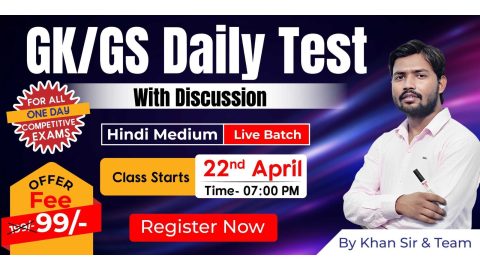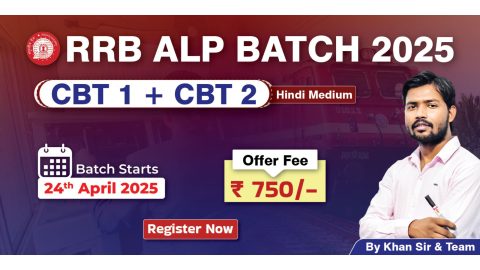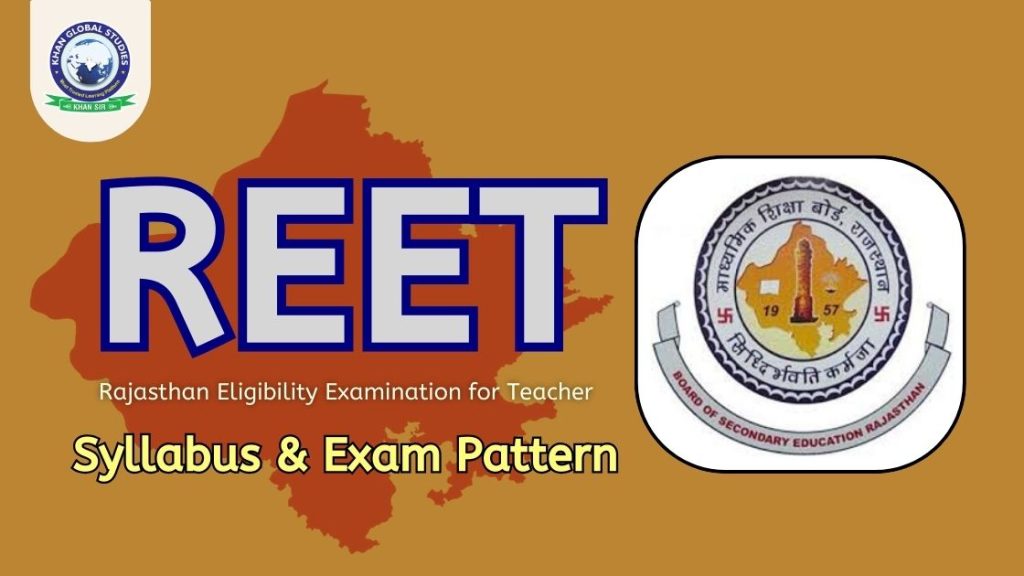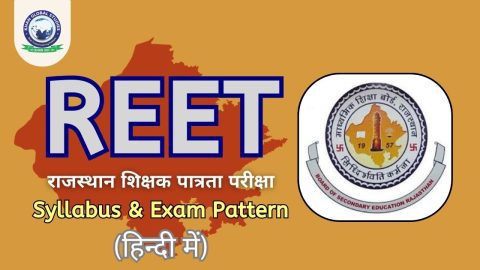Teachers make an important contribution to building the future of our country. Teaching is a profession whose importance will never diminish. To become a teacher, there are examinations according to your qualifications and education, and by passing you can become a teacher. Similar is the REET exam for teacher recruitment.
What is the REET exam?
The full name of REET is the Rajasthan Teacher Eligibility Test. This exam is the Rajasthan Eligibility Test for Teachers. It is organized for the recruitment of third-grade teachers in Rajasthan. The Rajasthan Board of Secondary Education (BRSE) conducts the REET exam. On passing the REET exam, a certificate is given, whose validity remains for 3 years. The REET exam is divided into two levels based on educational qualification and teaching level.
REET Exam Overview
| Conducting Body | Board of Secondary Education, Rajasthan (BSER) |
| Exam Name | Rajasthan Teacher Eligibility Test (RTET)/ Rajasthan Eligibility Examination for Teacher (REET) |
| Exam Frequency | Once a year or as per vacancy |
| Mode of Exam | Offline |
| Exam Time Duration | 150 Minutes |
| Language | English and Hindi |
| Purpose of Examination | To check the eligibility of candidates for primary and upper-primary level |
| Official Website | rajeduboard.rajasthan.gov.in |
REET Exam Level
There are two levels of REET exam, Level 1 and Level 2, which are explained below-
Level-1:
If you have done BSTC from Rajasthan or JBT from Haryana then you can apply for Level 1 of the REET exam. Teachers falling under this level can teach students from class 1 to class 5 and are called primary teachers.
- Child Development and Pedagogy – 30 questions
- Language First – 30 questions
- Language II – 30 questions
- Environmental Studies – 30 Questions
- Mathematics – 30 questions
Level-2:
Level 2 of the REET exam is B.Ed. Is. This is for those candidates who have done so. Level 2 teachers can teach students from Class 1 to Class 8, and are called upper primary teachers.
- Child Development and Pedagogy – 30 questions
- Language First – 30 questions
- Language II – 30 questions
- Social Studies/Science and Mathematics Subject/Other Subject – 60 Questions
REET Exam Qualification
The eligibility for the REET exam is given below:
| REET Exam Category | Minimum Marks |
| General | 60% |
| ST/SC/OBC/MBS/EWS | 55% |
| Widows, Separated and Ex-Servicemen | 50% |
| Disability Category | 40% |
| Sahariya TSP Tribal Area | 36% |
Educational Qualification
The educational qualifications to appear for the REET exam are as follows:
Essential Educational Qualifications for Classes 1 to 5 (Level-1)
- Must have passed 12th with minimum 50% marks and appear in the final year of a 2-year Diploma in Elementary Education.
- Must have passed 12th with minimum 50% marks and appeared in 4-year Bachelor of Elementary Education (B.Ed.) or final year of this course.
Required Educational Qualifications for Grades 6 to 8 (Level-2)
- Graduation with minimum 45% marks and 1 year Bachelor of Pedagogy (B.Ed.) as per NCTE (National Council for Teacher Education).
- Must have passed 12th with minimum 50% marks and 4-year B.A./B.Sc.Ed. Or B.A.Ed./B.Sc.Ed. This course must be either passed or in the final year of study.
- Must have passed 12th with minimum 50% marks and must have passed or studying in the final year of a 4-year Bachelor in Elementary Education (B.Ed.).
REET Exam Pattern
The pattern of the REET exam according to its exam level is given below-
For Paper-I (Class I to V) Primary Stage
| Subject | No. Of Questions | Maximum Marks |
| Child Development and Pedagogy | 30 | 30 |
| Language I (Compulsory) | 30 | 30 |
| Language II (Compulsory) | 30 | 30 |
| Maths | 30 | 30 |
| Environmental Studies | 30 | 30 |
| Total | 150 | 150 |
For Paper-II (Class VI to VIII) Elementary Stage
| Subject | No. Of Questions | Maximum Marks |
| Child Development and Pedagogy | 30 | 30 |
| Language I (Compulsory) | 30 | 30 |
| Language II (Compulsory) | 30 | 30 |
| Maths & Science or Social Science/Social Studies or Any other Subject | 60 | 60 |
| Total | 150 | 150 |
REET Syllabus
The information about the REET exam syllabus is given below-
1. Child Development and Teaching Methods
- Action Research
- Child Development
- How Children learn and think
- Teaching-learning process
- Learning Difficulties
- Theories of learning and its implication
- Motivation and Implications for Learning
- The Role of Heredity and Environment
- Individual Differences
- Factors Affecting Learning
- Meaning and Purposes of Assessment
- Understanding diverse learners
- Meaning & Concept of learning and its processes
- The Right to Education Act 2009
2. Environmental Studies
- Habitats of Living Beings
- Taking care of your body (Personal Hygiene)
- Family
- Our Culture and Civilization
- Matter and Energy
- Public places and Institutions
- Problems of Teaching
- Concept & scope of Environmental Studies
- Environmental Studies and Environmental Education Learning Principles
- Discussion
- Experimental/Practical Work
- Comprehensive and Continuous Evaluation
- Clothes and Habitats
- Profession
- Transport and Communication
- Significance of Environment Studies, Integrated Environment Studies
- Approaches of presenting concepts
- Approaches of presenting concepts
- Teaching material/Aids
- Activities
3. Maths and Science
- Percentage
- Living Being
- Human body and health
- Indices
- Algebraic expressions
- Factors
- Heat
- Light & Sound
- Solar System
- Chemical Substances
- Animal Reproduction and Adolescence
- Force and Motion
- Ratio and Proportion
- Lines and Angles
- Surface Area and Volume
- Plane Figures
- Interest
- Area of Plane figures
- Statistics
- Graph
- Micro-organisms
4. Social Studies
- Pedagogical Issues – I
- Pedagogical Issues – II
- Geography and Resources of Rajasthan
- Resources and Development
- Indian Civilization, Culture, and Society
- Mauryan & Gupta Empires and Post-Gupta Period
- Indian Constitution and Democracy
- Main Components of the Earth
- Medieval and Modern Period
- Geography and Resources of India
5. English: Paper-1
- Principles of Teaching English
- Framing Questions Including Wh-questions
- Teaching Learning Materials
- Development of Language Skills, Teaching Learning Materials
- Unseen Prose Passage
- Comprehensive & Continuous Evaluation
6. English: Paper-2
- Unseen Poem
- Principles of Teaching English, Communicative Approach to English Language Teaching,
- English
- Basic knowledge of the English Sounds and their Phonetic Transcription
- Modal Auxiliaries, Phrasal Verbs, and Idioms, Literary Terms
- Challenges of Teaching
Language Selection for the REET exam
Information about how important the choice of language is for REET exam is given below-
- Language has to be selected in the second and third sections of the REET exam. Here you get the option of different languages. You must select one language each.
- In Section 2, select the language that will be your medium of instruction.
- In Section 3, select the language to answer the questions. It could be anyone. In which you are interested and you can score maximum marks.
- But both sections should not contain the same language. If you have selected Hindi or English language in Section 2, select another language in Section 3.
- Suppose you have selected Hindi language in Section 2, you can select any language other than Hindi in Section 3. If English language is selected in Section 2, then in Section 3 you can select any language other than English.
Age Limit
The age limit information for the REET exam is given below-
Age Limit
- Minimum age: 18 years
- Maximum age: 40 years
Age Limit Relaxation
- SC/ST and Backward Class Males – 5 years.
- Females of SC, ST and Backward Classes – 10 years.
- General Class Females – 5 years.





